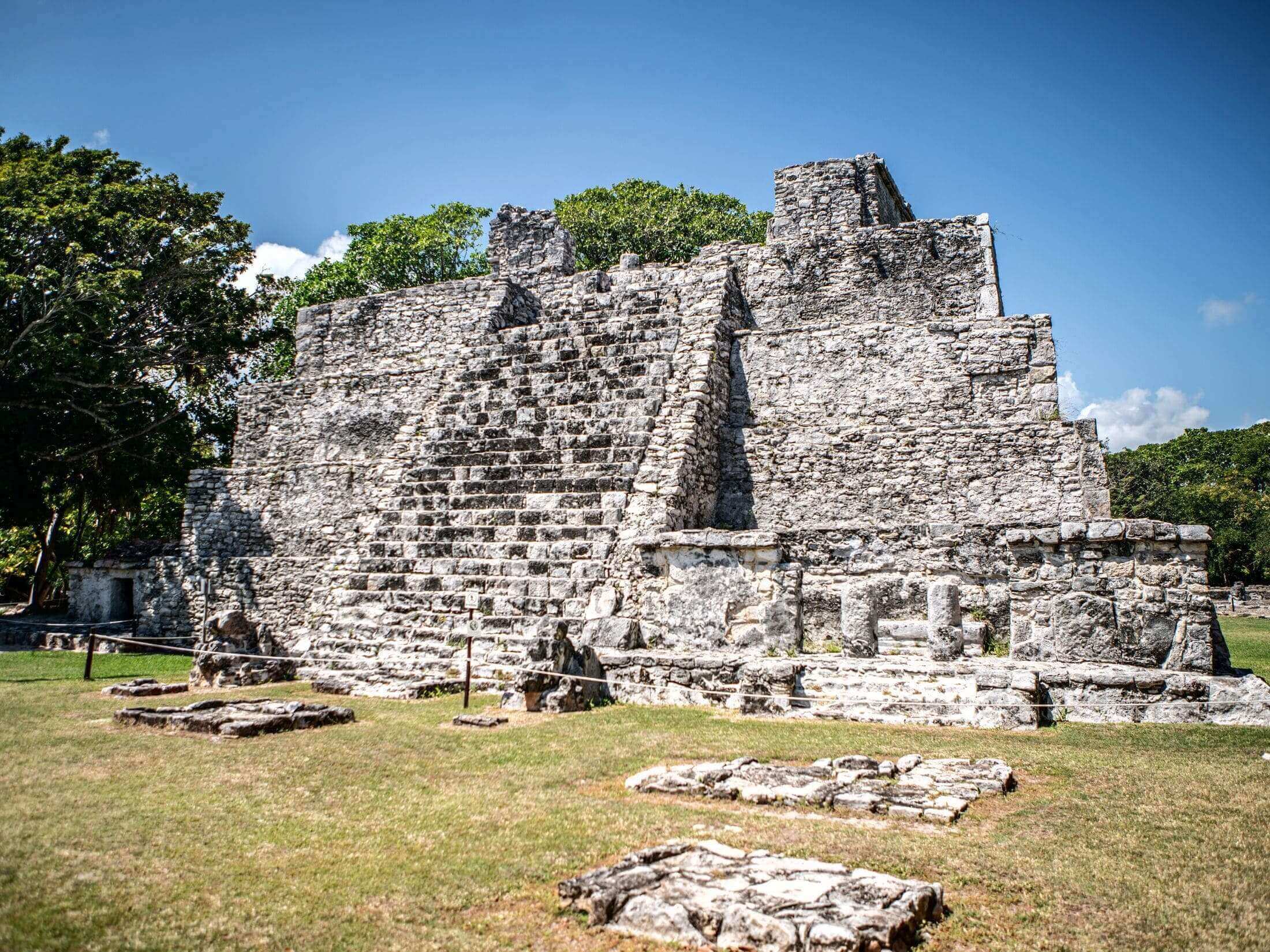The city of Cancun is more than just its beaches, we have numerous sites, regions, and pyramids in Cancun and nearby pre-Hispanic cities that remain full of ancient history available to visitors from all around the world to learn more about.
We know choosing which archaeological sites to visit during your visit to this Caribbean paradise is undoubtedly difficult, especially if you only have a limited amount of time. To aid you with this decision-making process, we’ll give you a brief overview of the archaeological sites and pyramids in Cancun that should not be missed.
In addition, although in Cancun you can visit a couple of archeological sites mostly located in the hotel zone of Cancun, because of the proximity to the Riviera Maya, you can also visit other significant pre-Hispanic cities like Coba, Tulum, and Chichen Itza.
El Rey, The Most Important Cancun Arqueological Site
The archaeological site of El Rey is one of the biggest in Cancun, it dates back to the year 300 and based on research was inhabited until 1550. It has been established that it was between 1200 and 1550 AD, the Middle Preclassic to the Late Postclassic when it was at its flourishing period.
Its precise construction of a causeway that extends from north to south, where on its sides they created platforms with residential rooms that are differentiated by elements, makes each building quite particular. There are 47 buildings in the administrative and religious areas, as well as two large squares because of the fact that the platforms of the North Causeway are aligned with the pyramidal base of the archaeological zone known as San Miguelito, it is believed that the two sites are a part of a single settlement that extends up to three kilometers and that many astronomical practices of ancient civilizations are connected to this region.
San Miguelito, an Extention of El Rey
On the island of Cancun, there is a postclassical yacimiento called San Miguelito. It is the northernmost extension of the main El Rey site, divided from it by Kukulkan avenue, which runs the length of Cancun Island. It was a part of the political organization of Ekab, which ruled Yucatán’s northeast during the Spanish Invasion. The location’s original name is unknown, but it’s known that the area used to be home to a cocotero plantation, which is where the contemporary name comes from.
San Miguelito was a part of a vast commercial network that stretched from Central America, around the peninsula, through Campeche on the coast of the Golfo, and into the interior; It was occupied during the Late Postclassic period from 1200 to 1550 AD and to reach the site you must follow a walking path that starts from the lower corridor.
Temple of The Alacrán
As the last archaeological site in Cancun at the hotel zone, we have the temple of the scorpion, which is considered to have been a point of monitoring and Mayan observation, because it was constructed on a cliff, and due to its location behind the Royal Park Hotel, this little site is the only one in the city that can be accessed from the beach, specifically by Playa Marlnand. Also, there is no entrance fee to this location, so anyone is welcome to visit and take in the ruins as well as the breathtaking sea sights.
“El Meco” An Ancient Mayan Ruin at Puerto Juarez
Although the site’s original name is unknown, the location may have been called Belma according to chroniclers writing in the sixteenth century. El Meco is the nickname of a local resident of the 19th century given by the moniker because of a deformity in his lower limbs that came to be associated with the ruins because he looked after a tiny ranch on the shore close to where the modern lighthouse is now.
Between 1200 and 1500 A.D., between the Early Classic and the Late Postclassic, was when it was most prosperous, being this location crucial to Mayan navigational strategy. There are 14 structures but the most notable is El Castillo, a pyramid with five stories and a height of 12.5 meters; It also houses the main plaza, which has a shrine in the middle where various political and ceremonial activities took place.
If you found this article useful and would like to come to visit some of the most beautiful pyramids in Cancun and its surroundings, scroll through our Instagram and check out our different tours.

